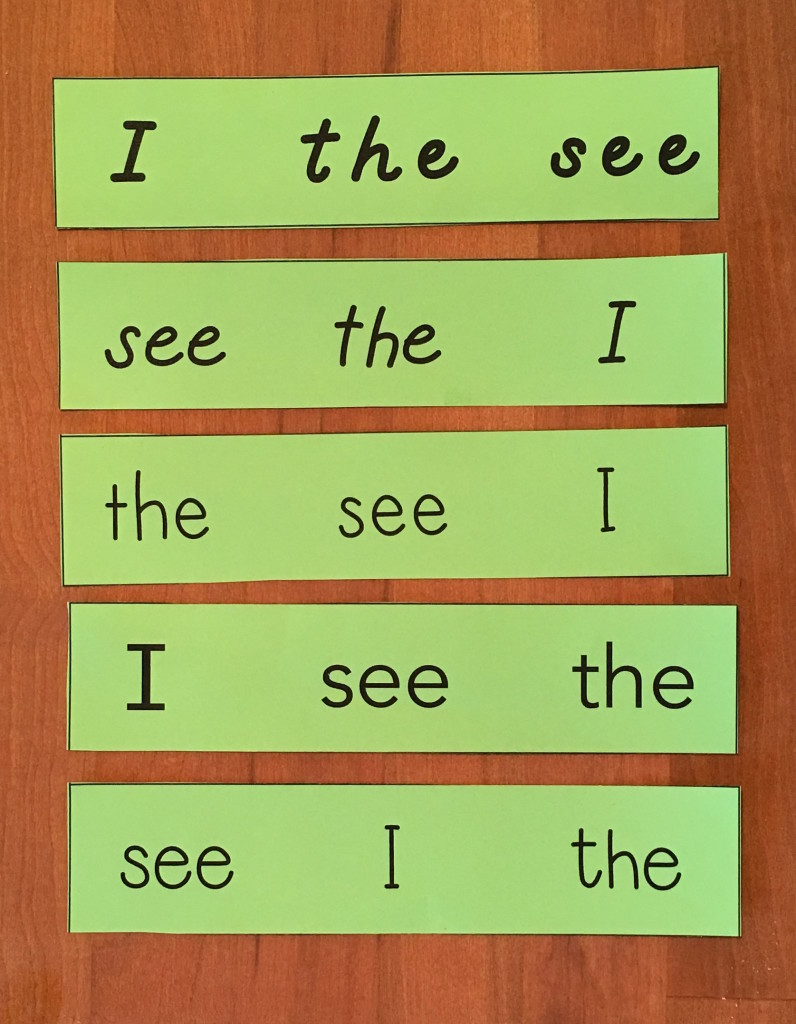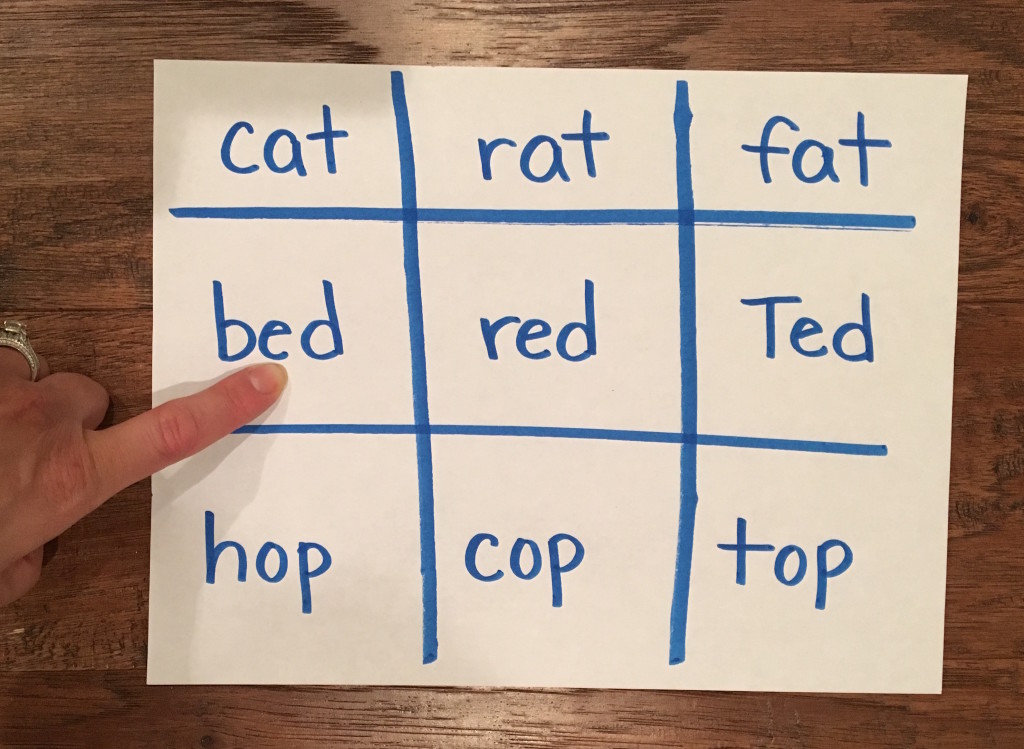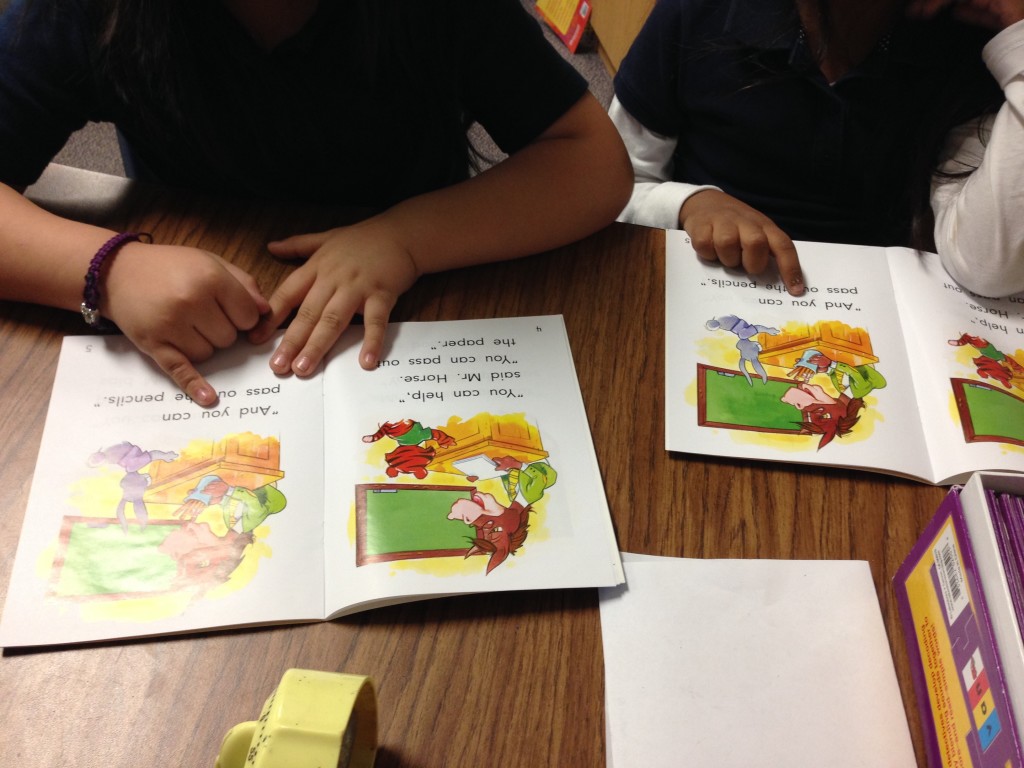Guided reading groups are so important. I have always cherished this time to reach a small group of students that are grouped at the same reading level. Not to mention this gives me time to sit down and not be on my feet! I make sure to do small groups EVERY day no matter what. In order to create a perfect reading group, I try to keep my groups small ranging from 5-7 students. This of course depends on my class size as I need to divide them into 4 groups depending on their reading level. I make sure I see all 4 groups every day. While I’m seeing a group, the rest of the class is working independently on reading centers. In the beginning of the year, I group them according to how many letters and sounds they know. As the year progresses I group them by their DIBELS scores and progress monitoring (in moderation because not all students test well), their letters and sounds, and how they read decodable and non-decodable words. Here you will see how I run a small group on a daily basis that has worked for me over the years. It is broken down minute by minute until you reach the 15 min mark.
This may seem like a lot to cover in 15 minutes, and some days I certainly don’t cover it all, but these are simply guidelines that I like to go by. Once we start getting the routine down, and the students know what is expected, it is much easier to keep the flow moving.
Time to sit and be ready to learn
From the beginning of the year I set high expectations that when students are at my reading table, they are to come quietly and sit like they are ready to learn. This eliminates wasted time correcting disruptive behavior. Here is an anchor chart I have posted next to my table that we often refer back to.
Minute 1 
DIBELS prep: I like to do a quick warm up when they first sit down. I give each student a paper (in a sheet protector) with either letters, cvc words, or nonsense words printed on it. I set the timer and they are off! Some days we skip that, and just do phoneme segmentation. I give them words, and we count the sounds as a group. I do all different types of words that they would hear on the DIBELS test.
Here are some worksheets I like to use from my DIBELS practice packet:

Minute 2-5 
CVC word work: I give each student a dry erase marker and a white board. I love the white boards that have the dotted lines on them, so they can practice forming their letters correctly.
Each week we have a word family that we focus on. We practice word building using these word families. For example: at word family
- Stretch the word CAT: I tell them to pretend like it’s bubble gum as they stretch the word out of their mouth. “caaaaaat”
- Then the students are to segment the word. They count the sounds using their fingers and reply: “I hear 3 sounds in the word cat” (It is important that they always speak in complete sentences.)
- In the beginning of the year I have to prompt them and write the word with them. I say things like, “Lets get our first sound ready. /c/ Say it with me, /c/. What letter makes the /c/ sound?” We decide it’s the letter c, and I write my letter and they write theirs. I repeat this step for the rest of the word. I have them write the word 3 times in a list format on their white board. As the year goes on, and they are ready to write words on their own, they sound out the letters and write the word 3 times. For those groups who are ready, we work on using that word in a sentence. We usually incorporate it with sight words that we know. Ex: I see a cat. I see a fat cat. I see a big cat in my yard. The sentences become so much more impressive as the year goes on!
I repeat this word building for about 3-5 words depending on how my pacing is going. To differentiate for those ELL/ESL/ELD learners, I have always included pictures with the words so they can really put a face to the name, so to speak. It helps tremendously!
Minute 6-8 
Sight word practice: We usually introduce between 3-6 words a week. I have a pre-made chart that’s made up with all the words on it. I use my trusty pointer and we go through the words. I usually prompt them by saying “word” and they say the word in a choral response.
That goes super quick, so then I pass out strips of the same sight words printed on paper for each student to have. Each strip is different. They are all to start reading the words on their own. I go around the table and listen to each kid read their words. Once I have heard from each of them, they rotate our strips of paper to the student next to them. I usually only have time to do this twice. I quickly collect the strips and paper clip them as I get ready for my next activity.
Minute 9-10 
CVC practice: I print on chart paper before hand a list of CVC words that I want to target that week. I usually do about 9 words. This is done together as I point to the middle sound with my finger, and I say “sound”, with that they repeat. Then I point to the beginning of the word and sweep my finger in an arc fashion under the word and say “word”, with that they read the whole word.
After we have practiced all together, I then pass out the CVC words on strips of paper. Each student gets a different paper with 3 CVC words on it, and I lean in and listen to them read the word. I then say rotate, and they pass the papers to their neighbor. Depending on my pacing, I try to do this for 2-3 rotations. Sometimes I don’t have time for the strips, and we just do the chart, or some days we just do the strips of cvc words.
Some days I mix it up and I don’t use my words from the chart, and I use these CVC sliders which the students LOVE!
Minute 11 
(This is usually done on day 1 only, and then I skip this for the rest of the week)
Phrases: I have phrases from the weekly reader we are reading in our small group. This helps familiarize them with the unfamiliar words before they dive into the book. I hand out the phrases to each student. I listen in as they read them independently (the first few days will require a lot of assistance as some words are unfamiliar to them), and then we rotate the strips to our neighbor. I try to get a complete rotation, but again that is depending on my pacing.
Minute 11-15 
Weekly reader: Now it’s time to read our book. We read the same book the whole week. In the beginning of the year I teach them that when we read books, it can be very tricky. So good readers “Do 2”, and I refer to my anchor chart. I model how we look at the picture if we come to a word we don’t know, or look at the first sound. I really overkill on this, so they don’t forget this reading strategy!
While reading our books, each day I pick something to focus on. Some examples are:
- Parts of the book: cover, spine, front of the book, back of the book, title, author, illustrator, and cover page.
- Sight word: We find it in the sentence and read the word.
- CVC or CVCe words: We try and find words that we know and read the word.
- Picture walk: We walk through the book and focus only on the pictures and what’s happening.
- Conventions: We focus on the capital letters at the beginning of the sentences, spacing between words, and punctuation at the end of the sentence.
- Comprehension: I ask them questions related to the book. Ex: Where is the setting and how do we know? Who are the characters? What is a key detail or main idea? (Some books can be very basic and may not have this.) Or I may ask the group as a whole to go back in their books and find something. For example if the book is about the ocean I would ask, “What is something we see in the ocean?” They are to find the page and when I get to that person, they reply, “I see seaweed in the ocean.” Again it is so important that they answer you in a complete sentence.
These reading strategies are done concurrently as we read the book. These are some of the reading techniques I use when reading our books. I make sure the students are always using their finger to track the word as they read or follow along.
- My turn, your turn: This is usually done the first day. I read the sentence as they follow along. Then they read the sentence after me. It is always good to provide a good model of how a sentence should be read.
- Choral reading: Usually done days 2-3. We all read the book together tracking our words.
- Student turn, your turn: We take turns where 1 student reads a page out loud as the rest of the students track the words. Then we all read that page together. I go around the table so everyone has a chance.
- Partner reading: They pair up with the person next to them and they take turns reading the book by page. I make sure to listen in and correct or assist any students who are having trouble.
As you can see pacing is key. You will need to keep track of your time and move very quickly if you want to cover everything. There are days I just want to focus on certain skills and I skip a few steps for sure. Also, this is kindergarten and things happen beyond our control (ie: someone needs to go to the nurse, a student has interrupted your group, someone had an accident, you get a phone call from the office, etc, etc, etc!). I always let students know, that if I am at my reading table working with a group, it can wait. They are only to interrupt if they are bleeding or puking! I have trained them to use things freely during this time (within moderation of course). This is just a guide line for things that I have found to be very effective in my small reading groups that I wanted to share with you. Skills that I never skip out on are phoneme segmentation practice, cvc word work (reading and writing words), and reading the book.
If you are interested in any sight word books that use some of these reading strategies that I have mentioned above, I have Sight Word Books for sale in my store.
Join the newsletter
Sign up for exclusive freebies and teaching tips here!















great ideas! Would you have any similar ideas for 2nd grade? Thanks
Thank you! I have never taught second, however, you could do the same type of work. You would just need to up the rigor and cover the skills required in second grade.